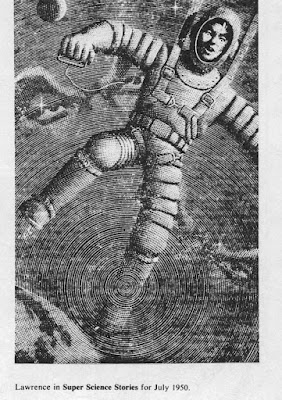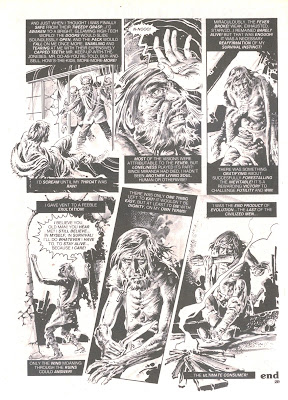February, 1987. On MTV, Wang Chung's video for the song 'Let's Go', released as a single at the end of January, is in heavy rotation.
The Winter issue of Heavy Metal magazine is out, with a cover illustration by Greg Hildebrandt (the brothers, having discontinued working together, are now pursuing independent paths in commercial art; Greg has chosen pinup art).
In her Editorial, Julie Simmons-Lynch cites the Spanish magazine Cimoc as a new source of material. This may be a likely explanation for the abundance of entries in Heavy Metal from Daniel Torres, whose 'Saxxon' comic takes up most of the space in this issue.
I can't say I'm all that impressed by the Torres features, which come to dominate much of the content of Heavy Metal during the mid-80s.
Torres' decision to render his cartoony art in an Art Deco styling really doesn't measure up to the standards established in Heavy Metal in the 70s and early 80s. When you factor in the frequently inane plots of these Torres strips, it just furthers the sense that editor Simmons-Lynch has lost touch with the atmosphere of the magazine, and explains its decline at this point in its publishing history.
The jettisoning of the text columns from the magazine means there's only one short entry in this Winter '87, but it's worthwhile: an overview of the stars of Cyberpunk !
Complete with a portrait of these stars (although the painting unfortunately fails to indicate 'who's who'). Anyone who was unaware of the existence of the genre now had no excuse to remain ignorant - it had been referenced in Heavy Metal.
The comic employs some impressive pen-and-ink linework, along with the sort of morbid humor that characterized the magazine back in the 70s. I've posted it in its entirety below.
















































































